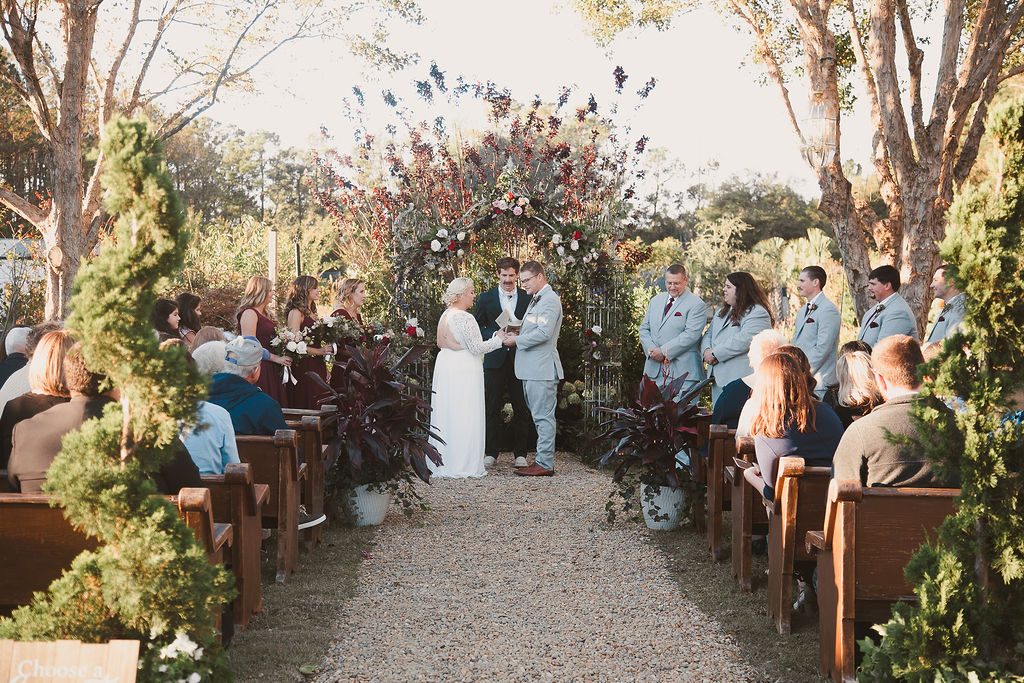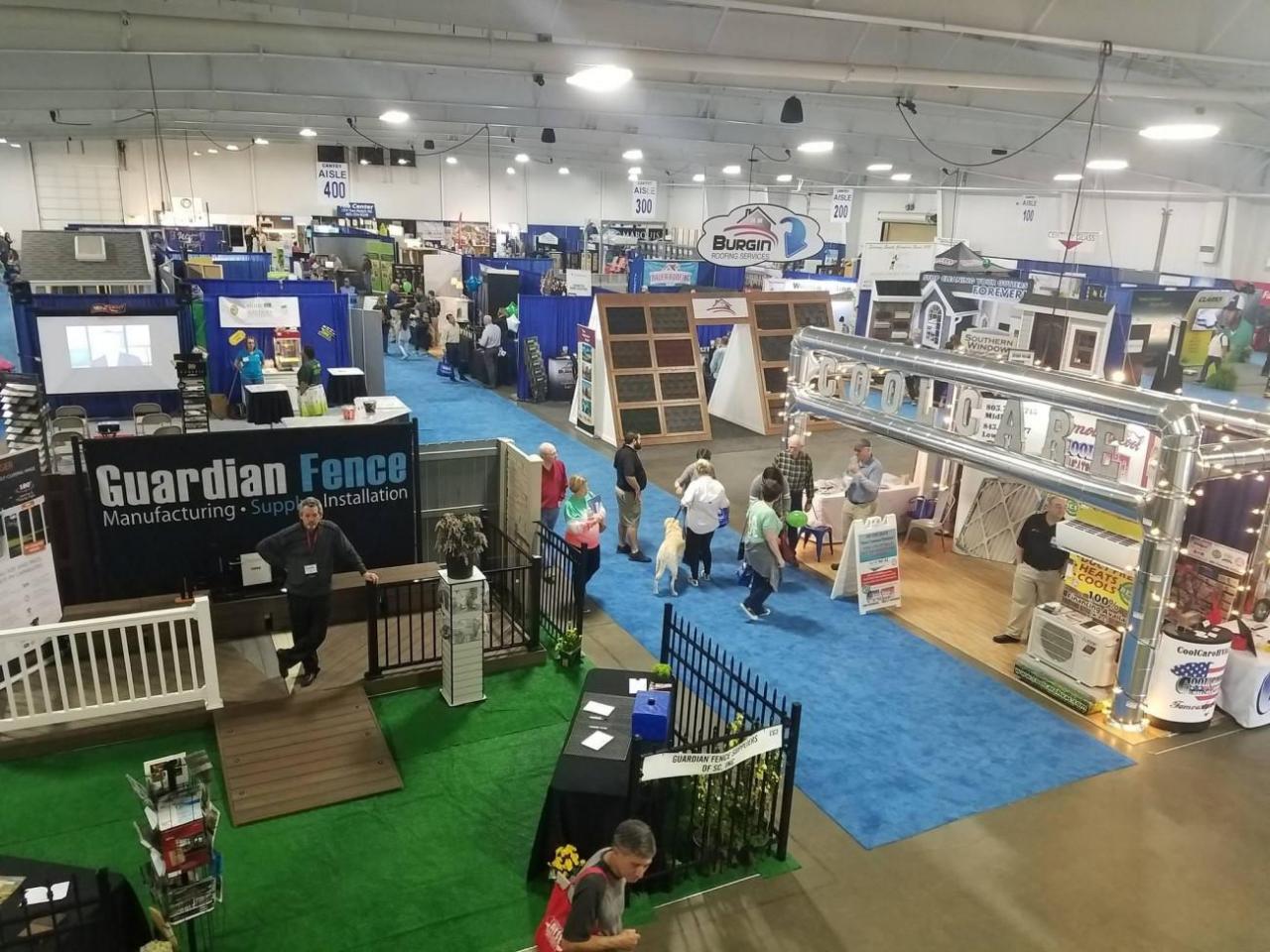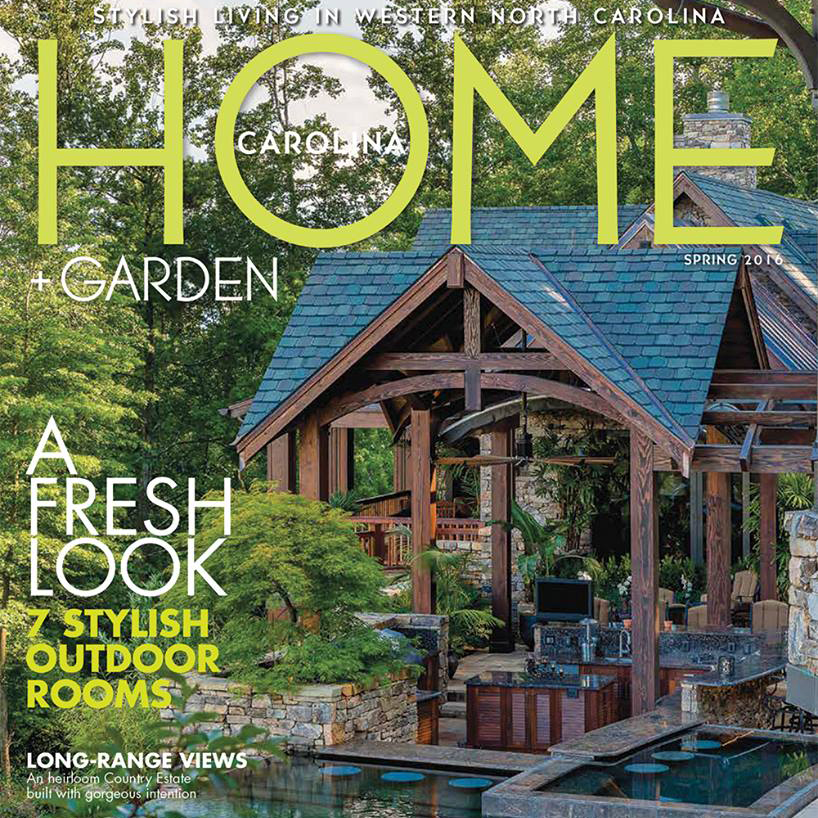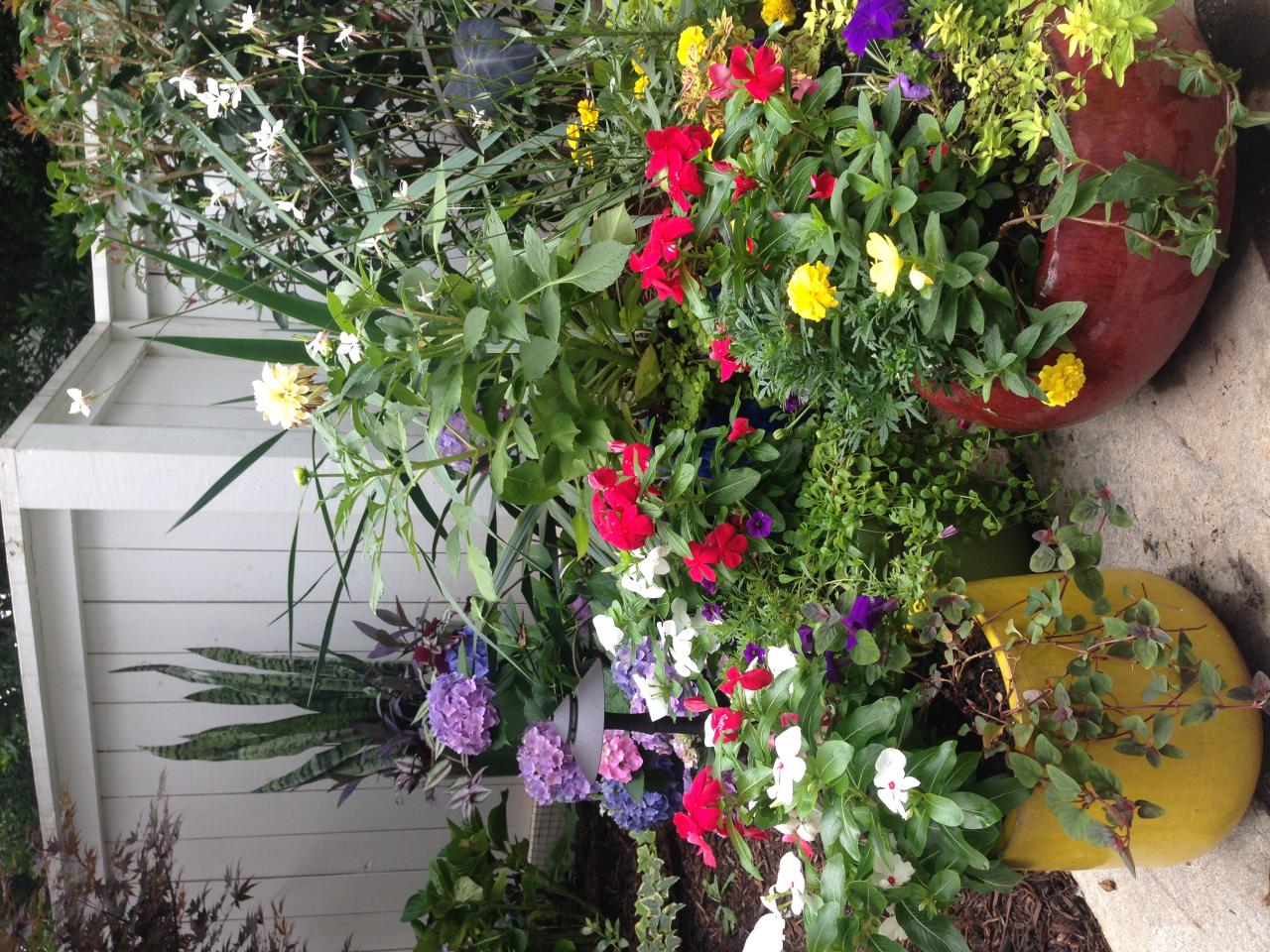Carolina Home & Garden: Dive into the vibrant world of Southern living, exploring the unique landscaping, architectural styles, and gardening practices that define the Carolinas. From charming cottage gardens to grand plantation homes, we uncover the region’s diverse aesthetic and practical approaches to home and garden design. This guide delves into everything from choosing the right native plants to mastering seasonal gardening techniques, ensuring your Carolina oasis thrives.
We’ll explore the demographics shaping the Carolina home and garden market, examining prevalent styles and comparing urban and rural trends. Discover a curated list of thriving native plants, practical irrigation methods, and sustainable home improvement practices. Learn about local resources, annual events, and the services of skilled professionals to help you create your dream Carolina landscape.
Understanding the Carolina Home & Garden Market

The Carolina home and garden market is a vibrant and diverse landscape, shaped by the region’s unique climate, history, and cultural influences. Understanding its nuances is crucial for anyone involved in the industry, from landscapers and builders to real estate agents and home improvement retailers. This section delves into the key demographics, prevalent styles, and landscaping trends defining this dynamic market.
Carolina Home & Garden Market Demographics
The Carolina home and garden market caters to a broad demographic, ranging from young professionals seeking modern, low-maintenance spaces to established families prioritizing spaciousness and outdoor living. Coastal areas attract a higher proportion of retirees and second-home owners, while inland regions see a mix of families and individuals across various income brackets. Affluence levels significantly influence the scale and complexity of home improvement projects and landscaping choices, with higher-income brackets often investing in more elaborate designs and premium materials.
Furthermore, a growing interest in sustainable and eco-friendly practices is evident across all demographics, driving demand for water-wise landscaping and energy-efficient home improvements.
Prevalent Home and Garden Styles in the Carolinas
The architectural styles of Carolina homes are as varied as the region itself. Coastal areas often feature traditional beach homes with breezy porches and light-colored exteriors, while historic towns showcase antebellum mansions with grand columns and ornate details. Inland areas display a wider range of styles, including Craftsman bungalows, Colonial-style homes, and modern farmhouse designs. Similarly, garden styles reflect this diversity.
Formal gardens with meticulously manicured lawns and symmetrical layouts are prevalent in more established neighborhoods, while informal, naturalistic gardens are increasingly popular, reflecting a preference for native plants and low-maintenance designs. Coastal gardens often feature drought-tolerant plants and landscaping that can withstand salt spray.
Landscaping Preferences and Gardening Practices in the Carolinas
Landscaping preferences in the Carolinas are heavily influenced by the climate, with a strong emphasis on drought-tolerant plants and landscaping that can withstand periods of intense heat and humidity. Native plants are becoming increasingly popular, as they require less water and maintenance while supporting local ecosystems. Many homeowners prioritize creating outdoor living spaces, such as patios, decks, and screened porches, to maximize their enjoyment of the outdoors.
Gardening practices often involve techniques such as mulching, drip irrigation, and rainwater harvesting to conserve water. The use of organic fertilizers and pest control methods is also growing in popularity, reflecting a greater awareness of environmental concerns.
Urban vs. Rural Home Improvement Trends in the Carolinas
Home improvement trends in urban and rural Carolina areas differ significantly. Urban areas tend to favor smaller-scale renovations and updates, focusing on maximizing space and creating modern, stylish interiors. Compact outdoor spaces often necessitate creative landscaping solutions, emphasizing vertical gardens and container planting. Conversely, rural areas often see larger-scale projects, such as additions and whole-house renovations, reflecting a preference for spaciousness and outdoor living.
Landscaping in rural areas tends to be more expansive, often incorporating features such as swimming pools, large decks, and extensive gardens. While both urban and rural areas are seeing a rise in sustainable building practices and eco-friendly materials, the scale and scope of these initiatives may differ based on available resources and lifestyle preferences.
Popular Plants and Gardening Techniques

The Carolina climate, with its warm, humid summers and mild winters, presents a unique opportunity for diverse gardening. Understanding the specific needs of plants thriving in this environment is crucial for a successful and beautiful garden. This section explores popular native plants, suitable garden layouts, efficient irrigation methods, and a comparison of organic and conventional gardening approaches prevalent in the Carolinas.
Ten Native Plants Thriving in the Carolina Climate
Choosing native plants offers numerous advantages, including requiring less maintenance, better resilience to local pests and diseases, and attracting beneficial pollinators. Below are ten native plants that flourish in the Carolina environment, along with their care requirements.
- Carolina Jessamine (Gelsemium sempervirens): A fragrant, vining plant that thrives in shade to partial sun. Requires well-drained soil and moderate watering. Tolerates drought once established.
- American Beautyberry (Callicarpa americana): A shrub with vibrant purple berries in autumn. Prefers full sun to partial shade and moist, well-drained soil. Attracts birds.
- Coneflower (Echinacea purpurea): A drought-tolerant perennial with daisy-like flowers. Prefers full sun and well-drained soil. Attracts butterflies and bees.
- Black-eyed Susan (Rudbeckia hirta): A cheerful yellow daisy-like flower that thrives in full sun. Tolerates dry soil conditions.
- Mountain Laurel (Kalmia latifolia): A beautiful evergreen shrub with showy flowers. Prefers acidic soil and partial shade. Requires consistent moisture.
- Azalea (Rhododendron spp.): A wide variety of azaleas thrive in the Carolinas, preferring acidic soil and partial shade. Requires regular watering, especially during dry spells.
- Oakleaf Hydrangea (Hydrangea quercifolia): A large shrub with cone-shaped flowers. Prefers partial shade and well-drained soil. Tolerates some drought.
- Red Twig Dogwood (Cornus sericea): A shrub with vibrant red stems in winter. Prefers moist soil and full sun to partial shade.
- Dwarf Palmetto (Sabal minor): A low-growing palm that tolerates various soil types and sun exposure. Drought-tolerant once established.
- Sea Oats (Uniola paniculata): A tall ornamental grass that thrives in sandy, coastal areas. Tolerates salt spray and wind.
Sample Small Backyard Garden Layout for the Carolinas, Carolina home & garden
This layout prioritizes native plants for ease of maintenance and ecological benefit. Imagine a 10×15 foot backyard.
The layout features a central area with a combination of Coneflowers and Black-eyed Susans for a vibrant display of color. Along the fence, a row of American Beautyberry provides fall interest and attracts birds. In a shadier corner, an Oakleaf Hydrangea offers a lush backdrop. A smaller area could include Carolina Jessamine trained to climb a trellis or fence.
Finally, Dwarf Palmetto can be strategically placed for textural contrast.
Carolina Home & Garden showcases stunning landscape designs, but the heart of any beautiful outdoor space lies in the plants themselves. Choosing the right flora is key, and thankfully, there are tons of resources available to help you decide, like this comprehensive guide to home garden plants which can help you select the perfect additions for your Carolina Home & Garden project.
Remember, the right plants can transform your outdoor space into a true oasis.
Irrigation Techniques for Carolina Gardens
Efficient irrigation is essential for water conservation, especially in the hot Carolina summers. Several techniques can be employed.
- Drip Irrigation: Delivers water directly to the plant roots, minimizing water loss through evaporation. This method is highly efficient and ideal for smaller gardens.
- Soaker Hoses: Similar to drip irrigation, soaker hoses slowly release water along their length, providing consistent moisture to the root zone.
- Rain Barrels: Collecting rainwater for later use significantly reduces reliance on municipal water supplies. This is a sustainable and cost-effective method.
- Smart Irrigation Systems: These systems use weather data and soil moisture sensors to optimize watering schedules, preventing overwatering and conserving water.
Organic vs. Conventional Gardening Methods in the Carolinas
Both organic and conventional gardening methods are widely practiced in the Carolinas. The key difference lies in the use of synthetic inputs.
Organic gardening relies on natural methods to improve soil health and control pests, such as composting, crop rotation, and beneficial insects. Conventional gardening may utilize synthetic fertilizers, pesticides, and herbicides to boost yields and manage pests. The choice depends on individual preferences, environmental concerns, and the scale of the garden.
Home Improvement and Design Trends

The Carolina region, encompassing diverse architectural styles and climates, sees a constant evolution in home improvement and design trends. Factors like coastal influences, historical preservation efforts, and the increasing focus on sustainability significantly shape these trends. Understanding these shifts is crucial for homeowners planning renovations or new constructions.
Current Trends in Carolina Home Exterior Design
Current trends in Carolina home exteriors blend traditional charm with modern aesthetics. Coastal homes frequently feature light, airy palettes, often incorporating shades of blue, gray, and white to reflect the surrounding environment. The use of natural materials like reclaimed wood, stone, and metal accents is prevalent, reflecting a growing preference for sustainable and durable options. Many homes are adopting larger windows and doors to maximize natural light and create a seamless transition between indoor and outdoor living spaces.
Porches and patios, often adorned with lush landscaping, remain popular features, emphasizing the importance of outdoor living in the Carolina climate. Architectural styles range from classic Lowcountry designs with their wide porches and intricate detailing to more contemporary interpretations that incorporate clean lines and minimalist aesthetics. The incorporation of smart home technology, such as automated lighting and security systems, is also gaining traction, enhancing both convenience and security.
Sustainable Home Improvement Practices in the Carolinas
The Carolinas are witnessing a surge in popularity of sustainable home improvement practices. Homeowners are increasingly adopting energy-efficient solutions such as solar panels, which are becoming increasingly cost-effective and readily available. The use of recycled and reclaimed materials in renovations is also gaining momentum, reducing environmental impact and adding unique character to homes. Rainwater harvesting systems are becoming more common, providing a sustainable source of water for irrigation and other household needs.
Landscaping with native plants requires less water and maintenance, reducing the overall environmental footprint. The adoption of high-performance windows and insulation improves energy efficiency, lowering utility bills and reducing carbon emissions. Furthermore, the use of low-VOC (volatile organic compound) paints and finishes minimizes indoor air pollution, creating a healthier living environment. Many builders are now focusing on building green, adhering to LEED (Leadership in Energy and Environmental Design) standards to create truly sustainable homes.
Carolina Home & Garden showcases stunning outdoor spaces, inspiring homeowners to create their own havens. For those looking to delve deeper into the art of creating the perfect backyard paradise, exploring resources on home garden design is a must. Understanding design principles elevates your Carolina Home & Garden project, leading to a truly exceptional outdoor experience.
Cost-Effectiveness of Different Home Improvement Materials
The following table compares the cost-effectiveness of various home improvement materials, considering both initial cost and long-term value:
| Material | Initial Cost | Durability | Maintenance |
|---|---|---|---|
| Vinyl Siding | Low | High | Low |
| Wood Siding | Medium-High | Medium | Medium-High |
| Brick | High | Very High | Low |
| Fiber Cement Siding | Medium | High | Low |
*Note: Costs are relative and can vary based on factors such as quality, installation, and location.*
Impact of Local Building Codes and Regulations on Home Construction
Local building codes and regulations in the Carolinas play a significant role in shaping home construction practices. These codes address various aspects, including structural integrity, energy efficiency, safety, and accessibility. Compliance with these regulations is mandatory, ensuring the safety and quality of new constructions and renovations. For instance, codes often mandate specific insulation levels to meet energy efficiency standards, influencing material choices and construction techniques.
Regulations regarding hurricane resistance are particularly relevant in coastal areas, requiring specific construction methods and materials to withstand high winds and storm surges. Understanding and complying with these codes is crucial for homeowners and builders to avoid legal issues and ensure the long-term viability and safety of their projects. Furthermore, local municipalities often have specific design guidelines, particularly in historic districts, to maintain architectural consistency and preserve the character of the area.
Seasonal Gardening and Maintenance: Carolina Home & Garden

Gardening in the Carolinas offers a diverse growing season, but success requires understanding the region’s unique climate and adapting your practices accordingly. From the mild winters of the coastal plains to the more pronounced seasonal changes in the mountains, careful planning is key to a thriving garden throughout the year. This section details seasonal gardening tasks, common challenges, and essential maintenance for a healthy and productive garden.
Carolina Seasonal Gardening Calendar
This calendar provides a general guideline for planting and harvesting common crops in the Carolinas. Specific dates may vary slightly depending on microclimates and the specific variety of plant. Always check seed packets or plant tags for more precise information.
| Season | Planting | Harvesting | Considerations |
|---|---|---|---|
| Spring (March-May) | Cool-season crops like lettuce, spinach, peas, and radishes; warm-season crops like tomatoes, peppers, and cucumbers (after last frost). | Cool-season crops in early summer; early summer harvests for some warm-season crops. | Protect young seedlings from late frosts. Monitor for early insect pests. |
| Summer (June-August) | Warm-season crops like squash, beans, corn, and melons. | Continuous harvesting of summer crops. | Ensure adequate watering during hot and dry spells. Be vigilant against fungal diseases in humid conditions. |
| Fall (September-November) | Cool-season crops for a fall harvest; plant garlic and onions for spring harvest. | Harvest fall crops like broccoli, kale, and Brussels sprouts. | Prepare the garden for winter by clearing out spent plants. |
| Winter (December-February) | Plant cold-hardy greens and cover crops. | Limited harvesting, depending on weather and plant hardiness. | Protect plants from frost and freezing temperatures. |
Common Gardening Challenges in the Carolinas
The Carolinas experience a range of climatic conditions and pests throughout the year. Understanding these challenges is crucial for successful gardening.
- Spring: Late frosts can damage young seedlings. Aphids and other early-season insects can infest plants.
- Summer: High heat and humidity can lead to fungal diseases like powdery mildew and blight. Weeds compete aggressively for resources. Various insect pests, including beetles and caterpillars, may become prevalent.
- Fall: Early frost can damage plants. Soil preparation for winter planting is essential.
- Winter: Freezing temperatures can kill tender plants. Protecting plants from harsh winter winds is crucial.
Preparing a Garden for Winter in the Carolinas
Preparing your garden for winter ensures its health and productivity in the following season.
- Clear out spent plants: Remove all dead or diseased plant material and dispose of it properly to prevent the spread of diseases and pests.
- Clean up debris: Remove fallen leaves, weeds, and other debris from garden beds to reduce pest overwintering sites.
- Amend the soil: Add compost or other organic matter to improve soil structure and fertility.
- Plant cover crops: Cover crops like rye or clover help protect the soil from erosion, suppress weeds, and improve soil health over the winter.
- Mulch: Apply a layer of mulch to protect plant roots from freezing temperatures and retain soil moisture.
Maintaining a Healthy Lawn Throughout the Year
Maintaining a healthy lawn in the Carolinas requires attention to seasonal needs.
Spring and Fall are ideal times for lawn fertilization and weed control. Regular mowing at the appropriate height for your grass type is essential throughout the growing season. Watering deeply and less frequently encourages deep root growth and drought tolerance. Aerating the lawn periodically helps improve drainage and root penetration. During summer, monitor for signs of drought stress and adjust watering accordingly.
Winter dormancy requires less maintenance, but leaf removal and careful snow removal are crucial to prevent damage. Proper fertilization, pest control, and weed management, tailored to the season, are vital for a healthy lawn year-round.
Local Resources and Events

Navigating the vibrant Carolina home and garden scene requires knowing where to find the best resources and events. From reputable nurseries brimming with native plants to engaging home and garden shows, the Carolinas offer a wealth of opportunities for both seasoned gardeners and enthusiastic beginners. This section highlights key local resources and events that can significantly enhance your home and garden experience.
Accessing expert advice and high-quality products is crucial for successful gardening and home improvement projects. Understanding the services offered by local professionals and the community initiatives supporting sustainable practices will help you build a thriving garden and contribute to a greener Carolina.
Reputable Local Nurseries and Garden Centers
Finding the right plants and gardening supplies is essential for any project. The Carolinas boast numerous excellent nurseries and garden centers, each offering unique selections and expertise. Below are five examples of reputable establishments, though many others exist throughout the region. The specific offerings and locations of these businesses may vary, so it’s always advisable to check their websites or contact them directly for the most up-to-date information.
- [Nursery Name 1, City, State]: Known for [specialization, e.g., native plants, rare orchids]. They often host workshops and offer expert advice on plant care.
- [Nursery Name 2, City, State]: A large-scale provider with a wide selection of plants, tools, and gardening supplies, catering to both residential and commercial clients.
- [Nursery Name 3, City, State]: Specializes in [specialization, e.g., organic gardening, sustainable landscaping]. They prioritize environmentally friendly practices.
- [Nursery Name 4, City, State]: A family-owned business with a focus on locally sourced plants and personalized customer service.
- [Nursery Name 5, City, State]: Offers a diverse range of plants, including a significant selection of trees and shrubs suitable for the Carolina climate.
Prominent Home and Garden Shows and Events
Annual home and garden shows provide a fantastic opportunity to discover new products, meet experts, and gain inspiration for your projects. These events are typically packed with vendors, demonstrations, and educational seminars.
- [Event Name 1, City, State]: A large-scale event usually featuring hundreds of exhibitors showcasing the latest in home improvement and gardening trends. Often includes workshops and demonstrations.
- [Event Name 2, City, State]: This show may focus more specifically on gardening, with a strong emphasis on native plants and sustainable practices.
- [Event Name 3, City, State]: A smaller, more regionally focused event, potentially highlighting local artisans and businesses in the home and garden industry.
Services Offered by Local Landscape Architects and Gardening Professionals
The Carolinas are home to many skilled landscape architects and gardening professionals offering a wide array of services to enhance outdoor spaces.
These services can range from comprehensive landscape design and installation to ongoing maintenance and plant care. Many professionals also offer consultations to help homeowners plan and execute their projects successfully. Some specialize in specific areas, such as water-wise landscaping or organic gardening techniques.
Community Gardens and Sustainable Gardening Initiatives
Numerous community gardens and initiatives throughout the Carolinas promote sustainable gardening practices and foster a sense of community.
These gardens often provide opportunities for residents to learn about organic gardening, composting, and water conservation. They can also serve as valuable resources for sharing knowledge and building connections within the community. Examples include initiatives that offer workshops on composting, seed-saving, and other sustainable practices. Some community gardens provide plots for residents to grow their own food, while others focus on creating beautiful and environmentally friendly public spaces.
Illustrative Examples of Carolina Homes and Gardens

Carolina homes and gardens reflect a rich tapestry of architectural styles and horticultural preferences, shaped by the region’s unique climate and history. From charming coastal cottages to grand plantation homes, each landscape tells a story of Southern charm and ingenuity. Let’s explore some representative examples.
A Charming Coastal Cottage Garden
Imagine a quaint cottage nestled amongst the dunes, its weathered clapboard painted a soft seafoam green. The garden, a riot of color and texture, spills from the porch onto the surrounding sand. A carefully constructed pathway, perhaps made of reclaimed wood, winds through the planting beds. Key plant choices include salt-tolerant varieties like sea oats ( Uniola paniculata), their silvery plumes swaying gently in the breeze.
Bright bursts of color are provided by beach sunflowers ( Helianthus debilis) and beach morning glories ( Ipomoea imperati). Fragrant herbs like rosemary and lavender add a touch of Mediterranean flair, thriving in the sandy soil. The overall design is relaxed and informal, embracing the natural beauty of the coastal environment. The garden is designed to withstand harsh winds and salty air, requiring minimal maintenance.
Architectural Features and Landscaping of a Traditional Carolina Plantation Home
The stately plantation home, a testament to a bygone era, is characterized by its grand scale and classical architecture. Think of towering columns, wide verandas, and symmetrical facades. The landscaping typically complements this grandeur. Formal gardens with manicured lawns and neatly trimmed hedges are common. Mature oak trees, draped with Spanish moss, provide shade and a sense of history.
Flower beds are meticulously planned, often featuring traditional Southern blooms like azaleas, camellias, and hydrangeas in a variety of colors. The design is symmetrical and balanced, reflecting the order and structure of the house itself. Long, sweeping driveways, often lined with live oaks, lead to the main house, creating a sense of arrival and grandeur. Water features, such as fountains or reflecting pools, further enhance the elegant ambiance.
A Modern Minimalist Garden Design for a Contemporary Carolina Home
In contrast to the traditional styles, a contemporary Carolina home might feature a minimalist garden design. Clean lines and geometric shapes dominate the landscape. The color palette is often subdued, featuring shades of gray, green, and beige. Plantings are strategically placed, emphasizing texture and form rather than a profusion of color. Gravel pathways and sleek, modern planters are incorporated into the design.
Succulents, grasses, and strategically placed evergreen shrubs provide structure and year-round interest. The overall effect is one of understated elegance and tranquility. This type of garden requires less maintenance than more elaborate designs, appealing to busy homeowners.
A Vibrant, Flower-Filled Garden for a Suburban Carolina Home
The suburban Carolina home often boasts a vibrant flower garden, a colorful explosion of blooms that brightens the landscape. This garden might include a mix of annuals and perennials, chosen for their ability to thrive in the Carolina climate. Brightly colored zinnias, petunias, and impatiens add a cheerful touch, while daylilies, coneflowers, and black-eyed Susans provide longer-lasting color and attract pollinators.
The garden might incorporate a variety of textures, including climbing roses on trellises, ferns in shady corners, and ornamental grasses to add movement and visual interest. A water feature, such as a birdbath or small fountain, can further enhance the garden’s appeal, attracting birds and butterflies. The design is informal and inviting, creating a welcoming space for relaxation and enjoyment.